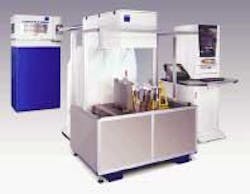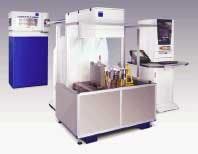Remote welding proves economical
Bremen, Germany—The auto industry is responding to the potential of remote laser welding as a means to reduce non-productive weld cycle time up to 90 percent. This process is characterized by long focal lengths and a highly dynamic beam manipulated by mirrors to position the beam on the workpiece at velocities up to 700 m/min, which allows very fast stitch welding.
Remote welding can decrease the processing time for zinc-coated steels as well as aluminum by a partial replacement of resistance spot welding of riveting. Other industries that require numerous welds distributed over a workpiece or where many small workpieces are welded sequentially are also interested in remote welding.
With laser power now in excess of 6 kW leading to weld penetrations of 6 mm or more, this process is ready to move out of the lab onto the production floor. At BIAS a 6kW CO2 laser with useful beam quality, and 4.5kW output, welds two thicknesses of 2 mm auto grade aluminum sheet at 3 m/min, and at 5 kW welds two thicknesses of 1.6 mm zinc-coated steel at 3.5 m/min, both at a focal length of 1500 mm.
Contact BIAS by e-mail at [email protected] about this work done by M.Grupp, T. Seefeld, and F. Vollertsen.

